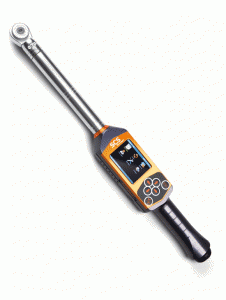Torque wrench storage and other basics you might have forgotten.
Let’s get back to basics.

- Extend the life of your tools, saving you money.
- Improve workflow, increasing productivity.
- Increase safety, reducing workplace injuries.
Over the course of years of work, we sometimes settle into routines that stray from these best practices.
So brush up on these and work smarter.
1. Cut back on the clicks
Most users allow torque wrenches to click multiple times. This actually applies additional torque to the bolt, putting you over the recommended tension.
Smooth, firm and steady is the best practice for your torque wrench. When the click sounds, let it rest there.
2. Working anticlockwise
Many torque wrenches indicate exclusively in the clockwise direction.
Users should always check the wrench’s specification before using it on an anticlockwise thread to ensure the tool is suitable and prevent a loss of torque control.
Examples of torque tools that work anticlockwise include:
- These angle controlled wrenches from Stahlwille.
- These mechanical torque wrenches from Stahlwille.
- These electromechanical torque wrenches, also from Stahlwille.
Contact our team today to learn more about torque wrenches!
3. Torque wrench storage. Don’t get lazy!
 A torque wrench in regular use doesn’t need to be wound back. If you expect to store a torque wrench for more than a few weeks, always wind it down to the lowest scale setting (never to zero).
A torque wrench in regular use doesn’t need to be wound back. If you expect to store a torque wrench for more than a few weeks, always wind it down to the lowest scale setting (never to zero).
Storing a fully loaded torque wrench can result in a set in the spring, weakening the spring over time. But if you completely offload the spring to the zero setting, other components within the wrench may move a little. And in the world of torque, a little is a lot. Reapplying spring compression will shift the orientation of these components, affecting accuracy.
4. Adjustable torque wrenches should stick with manufacturer standards
Manufacturers always provide the required torque for any given piece of equipment. It’s important to meet these levels when adjusting your torque wrench in the field.
Remember to always adjust the wrench up the scale to the required torque figure to ensure an accurate setting.
5. Lock it in!
Repetitive works often result in careless mistakes.
It’s easy to accidentally adjust the settings on a torque wrench during use. Always apply the adjustment lock if your torque wrench is equipped with one.
6. Undoing with torque wrenches.
Most torque wrenches can be used for undoing, as long as operators don’t exceed the maximum torque.
However, if the bolt sticks, even at the maximum torque of the wrench, switch to another tool. By exceeding the maximum torque limit during a bolt loosening you can affect wrench accuracy, causing problems for future use.
If you have another tool handy, it’s probably safer (and almost as quick) to switch to it.
7. Using marked loading points for accurate results
Most torque tools are length-dependent and even feature a marked loading point on the handle.
So why don’t you use it!?
Most operators don’t, so you aren’t alone. But accurate torque requires your hand on the marked load point.
If you don’t use the marked load point, the calibration on your torque wrench will be off and you won’t apply the right torque to your bolt.
Centre your hand over the mark and keep it there.
8. Extending the handle.
Don’t do things the Red Green way.
Never put a pipe or any other kind of extension onto a torque wrench handle. That makeshift addition will damage the tool and corrupt accuracy.
Then there’s the safety problem. You’re putting yourself at risk with a low-tech “upgrade” like this. So just don’t do it.
Professionals in mining, petrochemical, wind power, off road and other contractors trust Ultra Torq to deliver quality tools and reliable advice for the right price.
These basics should get you back on to a safer, more productive, and cost-effective worksite.



